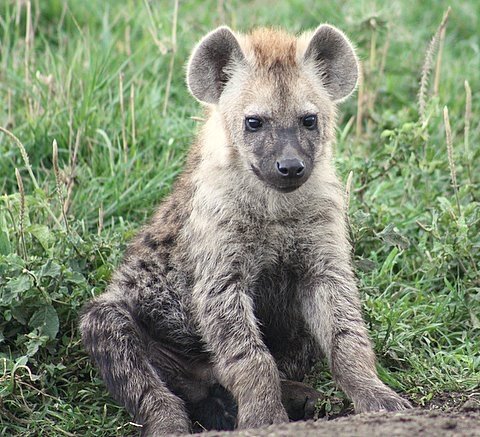|
Author: Kate Let’s face it, hyenas are weird. And, while their bizarre qualities are what we scientists can’t get enough of, they’re also the reason that hyenas have been forever loathed and misunderstood. There are more myths surrounding hyenas then I can count, but we’ll start with one of the strangest and most common.... Yesterday, a safari guide stopped us on the road. He said, in a hushed tone (like many guides, he liked to pretend he knew everything and didn’t want his clients to hear him admitting uncertainty), “Is it true that in hyenas, males and females are, you know…one?” It wasn’t the first time I’d heard this question, and I’m sure it won’t be the last. While males and females are not, in fact, “one,” hyenas do have a definite physical peculiarity: the two sexes have nearly indistinguishable genitals. That’s right: female hyenas have “pseudopenises” - completely capable of erections – as well as “pseudoscrotums” made of fatty tissue. Don’t say I didn’t warn you…I told you they were weird. In fact, if I didn’t know any better, I’d buy into this whole male=female thing too. Check out the hyena below…that, dear readers, is a female hyena in all her male-mimicking glory. Imagine seeing that hyena nursing a cub or – stranger still – giving birth. That’s why, for millennia, people have thought that hyenas had both male and female organs, a biological phenomenon called hermaphrodism. This sexual ambiguity, popularized by writers from Ovid to Hemingway, has made hyenas the subject of confusion, fear, and mistrust.
While hermaphrodism may seem like material for freak shows and science fiction novels, it’s actually somewhat common in the animal world. Picture this (I liked Leslie's hypothetical "Carl" story, so here goes): you’re a female sea cucumber that lives on the ocean floor and rarely comes into contact with another sea cucumber. But, you'd really like to fulfill your biological destiny to mate before you die. You may wait days, weeks, or months to see another sea cucumber…so let’s hope it’s a male! OR you could be a hermaphrodite with the potential to be both male and female…that way, no matter who you run into, you’ll be able to fill the ocean with lots of adorable baby sea cucumbers. However, hyenas certainly aren’t solitary, and they encounter members of the opposite sex dozens of times a day, so hermaphrodism wouldn’t be a real advantage here. Instead - despite all appearances - hyenas follow the standard mammalian pattern of having two distinct sexes: males and females. While scientists as far back as Aristotle have tried to clear up the confusion, their rational arguments have been drowned out by images of female hyenas’ uncanny “maleness.” Of course, if you’re even slightly scientifically-minded, this brings up the obvious question: why do females have pseudopenises? Well, we're still working on ironing out the details of that one. If you've got a definitive answer, let me know, and I'll have a PhD in the bag.
1 Comment
Your comment will be posted after it is approved.
Leave a Reply. |
About
Notes From Kenya is a blog run by the students in the Holekamp Lab at Michigan State University, College of Natural Science, East Lansing, Michigan, U.S.A. Archives
July 2020
Categories |

 RSS Feed
RSS Feed